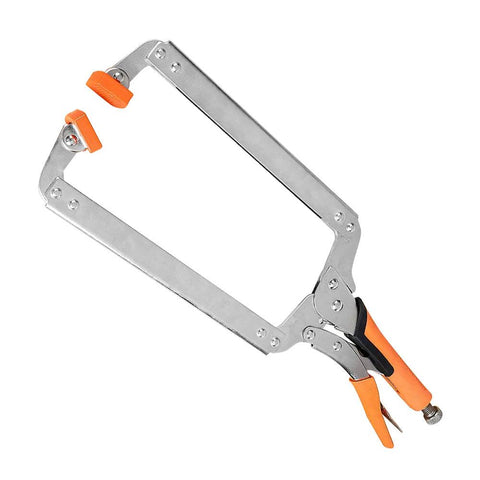Woodworking tools often involve joining wood pieces together to create sturdy and visually appealing structures. When it comes to holding wood corners together, there are several techniques and methods to consider. In this article, we will explore the various ways to secure wood corners and unleash the secrets to achieving strong and durable connections.
Butt Joints: Reinforcing Simplicity
One of the simplest and most common methods for joining wood corners is using butt joints. With butt joints, the end grain of one piece of wood is joined directly to the face or edge grain of another piece. To reinforce these joints, you can use different techniques:
- Screws and Nails: Utilizing screws or nails is a straightforward way to secure butt joints. Pre-drill pilot holes to prevent splitting and then drive screws or nails into the joint. This method provides decent strength and can be reinforced with glue for added durability.
- Dowels: Dowels can add strength and stability to butt joints. Drill matching holes into both pieces of wood and insert dowels coated with glue. The dowels help align the pieces and create a stronger connection.
- Biscuit Joinery: Biscuit joinery involves cutting slots into the wood pieces and inserting thin, football-shaped biscuits coated with glue. When the biscuits expand after glue application, they create a tight bond, enhancing the joint's strength.
Miter Joints: Aesthetic Appeal and Precision
Miter joints are commonly used for creating clean, seamless corners, especially in projects that require precise angles and visible grain continuity. Here are some techniques to secure miter joints:
- Reinforced Glue: Applying wood glue to the mitered surfaces and clamping them together provides a strong bond. To reinforce the joint further, you can use splines or dowels inserted into slots cut across the joint.
- Biscuit Joinery: Biscuit joinery is also suitable for miter joints. By cutting slots into the mitered edges and inserting biscuits coated with glue, you can achieve enhanced stability and alignment.
- Reinforcement Blocks: For larger or heavier projects, adding reinforcement blocks to the inside corners of the miter joint can provide extra strength. These blocks can be secured with screws or glue.
Dovetail Joints: Unmatched Strength and Durability
Dovetail joints are renowned for their strength and resistance to pulling forces. These interlocking joints are commonly used in cabinetry and fine woodworking. To create dovetail joints:
- Hand-Cut Dovetails: Traditional hand-cut dovetails require precision and skill. By carefully shaping the wood pieces to form interlocking pins and tails, you can achieve a joint that offers exceptional strength and durability.
- Router or Table Saw: Utilizing a router or table saw with a dovetail jig allows for more efficient and consistent dovetail joints. The jig guides the cutting tool to create precise pins and tails, resulting in a strong and visually appealing joint.
- Dovetail Templates: Dovetail templates provide a quick and accurate way to create dovetail joints. By using a template and a router with a guide bushing, you can achieve consistent and professional-looking dovetails.
Conclusion
When it comes to holding wood corners together, there is a wide range of techniques and methods to choose from. Whether you're using butt joints, miter joints, or dovetail joints, selecting the appropriate technique for your project is crucial. Consider the strength, durability, and aesthetic requirements of your woodworking project when deciding which method to employ. By mastering the art of securing wood corners, you can create sturdy, visually appealing structures that stand the test of time.



